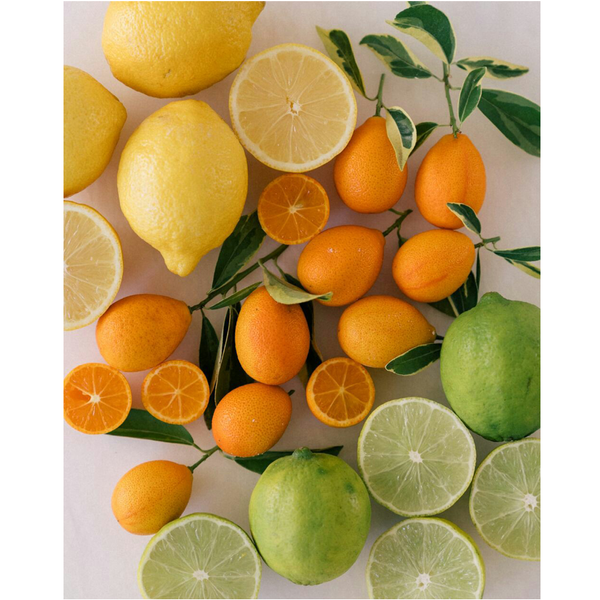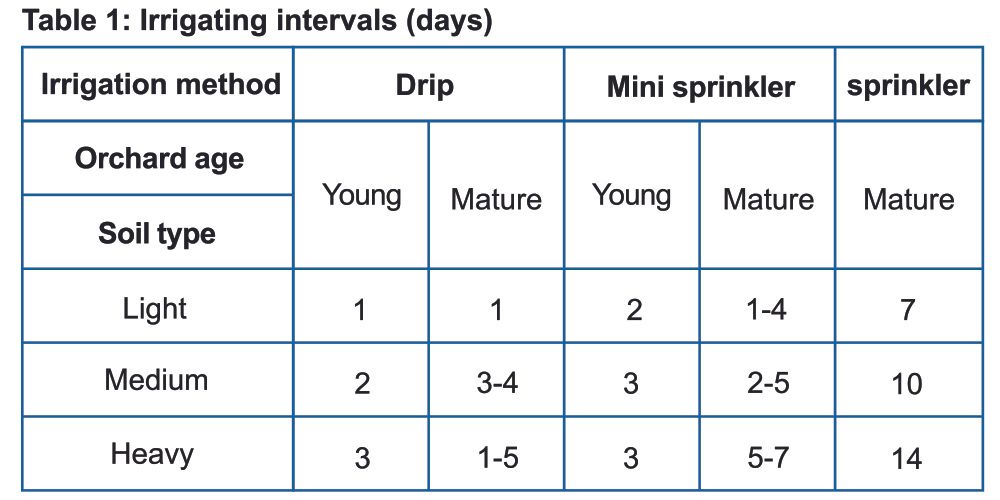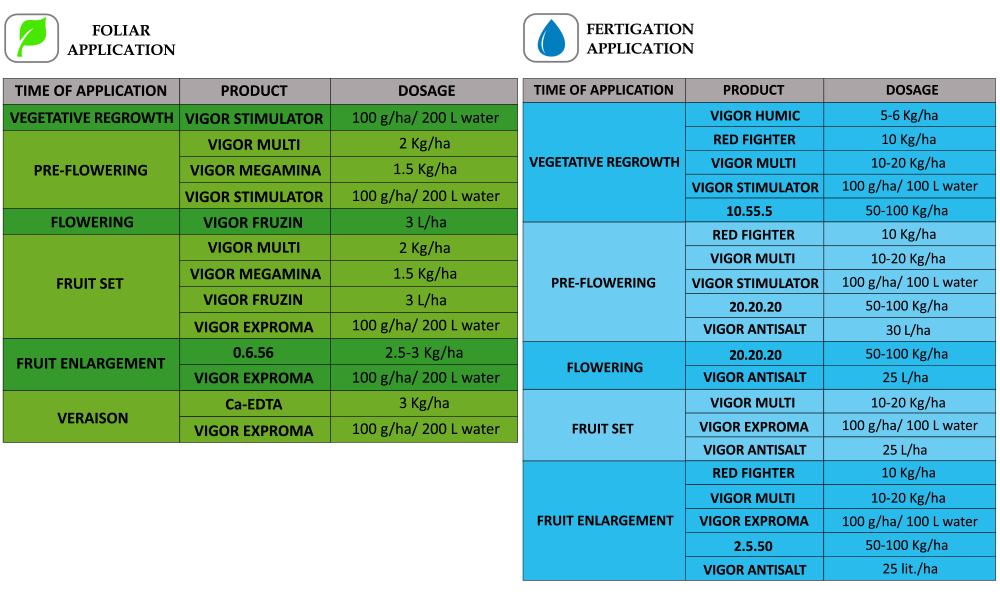Irrigation and Fertilization Plans

Irrigation is one of the most important factors in producing a good yield of quality citrus. Irrigation scheduling, knowing how much water to put on and when, has a direct impact on tree health as well as fruit yield, size and quality. Without correct irrigation scheduling, orchard is more susceptible to nutrient deficiencies, physiological disorders, pests and disease.
Correct irrigation scheduling requires an understanding of:
- How much water can be held in the crop root zone
- How much water the crop uses each day
- How much water the irrigation system applies
Shallow root system
Citrus have a shallow root system. It is important to aim irrigation at the effective root zone, minimizing the amount of water leaching past. For citrus, the effective root zone is usually in the top 30 to 40 cm, depending on the soil type.
How much water can the root zone hold?
The amount of water that can be held in the root zone and thus available to the tree varies with the irrigation system, soil type, depth of the effective root zone, and proportion of stone or gravel in the soil.
Scheduling irrigation
To schedule irrigation, the amount of water available in the crop root zone with the tree’s daily water requirement should be compared. If the daily water requirement exceeds the amount of water that can be held in the root zone, there will be a need to irrigate more than once a day. If the soil can hold more than the daily water requirement, there is an option of irrigating when the available water is depleted (this may be every second or third day).
Rainfall during the irrigation season may reduce the irrigation requirement of trees. Not all rainfall is available to the trees; some is lost to run-off, percolation below the root zone, and interception by leaf litter or mulch.
Over-irrigation, especially surface irrigation, may wet the trunks of the trees and increase the incidence of root rot caused by Phytophthora. Lime-induced chlorosis can be aggravated by over-irrigation, and tends to be reduced by drip irrigation. Irrigation timing is considered crucial for reproductive development, fruit set and fruit enlargement. However, cropping in one season influences both root extension and top growth, often with a carry-over effect on yield in the successive year.

FERTILIZATION PLAN






